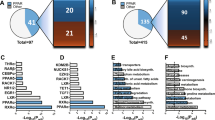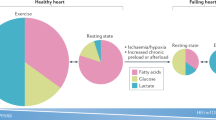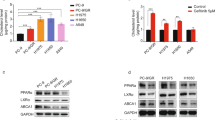Abstract
Fenofibrate, a peroxisome proliferated activated receptor alpha (PPARα) agonist, has been shown to decrease plasma triglyceride (TG) and increase plasma high-density lipoprotein (HDL) cholesterol levels despite a large interindividual variation in the response. Fenofibrate-activated PPARα binds to a DNA sequence element termed PPAR response element (PPRE) present in regulatory regions of target genes. A PPRE has been identified in the proximal 5′ flanking region of the gene encoding the liver fatty acid binding protein (LFABP). LFABP is a small cytosolic protein of 14 kDa present in the liver and the intestine and is a member of the superfamily of the fatty acid binding proteins (FABPs). FABPs play a role in the solubilization of long-chain fatty acids (LCFAs) and their CoA-ester to various intracellular organelles. FABPs serves as intracellular acceptors of LCFAs, and they may also have an impact in ligand-dependent transactivation of PPARs in trafficking LCFAs to the nucleus. Since PPARs are known to regulate the transcription of many genes involved in lipid metabolism, the importance of LFABP in fatty acid uptake has to be considered. The aim of this study was to verify whether genetic variations in the LFABP gene may impact on plasma lipoprotein/lipid levels in the fasting state as well as on the response to a lipid-lowering therapy with fenofibrate on plasma lipids and obesity variables. We also wanted to verify whether the presence of the PPARα L162V mutation interacts with genetic variants in LFABP gene. To achieve this goal, we first determined the genomic structure of the human LFABP gene and then designed intronic primers to sequence the coding regions, all exon-intron splicing boundaries, and the promoter region of the gene in 24 patients showing divergent plasma lipoprotein/lipid response to fenofibrate. Sequence analysis revealed the presence of a T94A missense mutation in exon 3. Interspecies comparison revealed that threonine 94 is conserved among species. We subsequently screened another sample of 130 French Canadian subjects treated with fenofibrate for the presence of the LFABP T94A mutation. Carriers of the A94 allele were at increased risk to exhibit plasma TG levels above 2.00 mmol/l after treatment with fenofibrate [2.75 (1.03–7.34); OR 95% confidence interval (CI)]. In addition, carriers of the A94 allele were characterized by higher baseline plasma-free fatty acid levels (FFA) (p=0.01) and by a lower body mass index (BMI) (p=0.05) and waist circumference (p=0.005) than T94 homozygotes. Moreover, PPARα L162V and LFABP T94A showed to have a synergistic effect on BMI (p interaction = 0.03). These results suggest that the LFABP T94A missense mutation could influence obesity indices as well as the risk to exhibit residual hypertriglyceridmia following a lipid-lowering therapy with fenofibrate.
Similar content being viewed by others
Log in or create a free account to read this content
Gain free access to this article, as well as selected content from this journal and more on nature.com
or
References
Bass NM (1988) The cellular fatty acid binding proteins: aspects of structure, regulation, and function. Int Rev Cytol 111:143–184
Bossé Y, Pascot A, Dumont M, Brochu M, Prud’homme D, Bergeron J et al (2002) Influences of the PPAR alpha-L162V polymorphism on plasma HDL(2)-cholesterol response of abdominally obese men treated with gemfibrozil. Genet Med 4:311–315
Bossé Y, Després JP, Bouchard C, Pérusse L, Vohl MC (2003) The peroxisome proliferator-activated receptor alpha L162V mutation is associated with reduced adiposity. Obes Res 11:809–816
Brandes R, Kaikaus RM, Lysenko N, Ockner RK, Bass NM (1990) Induction of fatty acid binding protein by peroxisome proliferators in primary hepatocyte cultures and its relationship to the induction of peroxisomal beta-oxidation. Biochim Biophys Acta 1034:53–61
Brisson D, Ledoux K, Bossé Y, St Pierre J, Julien P, Perron P et al (2002) Effect of apolipoprotein E, peroxisome proliferator-activated receptor alpha and lipoprotein lipase gene mutations on the ability of fenofibrate to improve lipid profiles and reach clinical guideline targets among hypertriglyceridemic patients. Pharmacogenetics 12:313–320
Carlsson L, Linden D, Jalouli M, Oscarsson J (2001) Effects of fatty acids and growth hormone on liver fatty acid binding protein and PPARalpha in rat liver. Am J Physiol Endocrinol Metab 281:E772–E781
Cleeman JI, Grundy SM (1997) National Cholesterol Education Program recommendations for cholesterol testing in young adults. A science-based approach. Circulation 95:1646–1650
Fodor JG, Frohlich JJ, Genest JJ Jr, McPherson PR (2000) Recommendations for the management and treatment of dyslipidemia. Report of the working group on hypercholesterolemia and other dyslipidemias. Can Med Assoc J 162:1441–1447
Forman BM, Chen J, Evans RM (1996) The peroxisome proliferator-activated receptors: ligands and activators. Ann NY Acad Sci 804:266–275
Galluzzi JR, Cupples LA, Otvos JD, Wilson PW, Schaefer EJ, Ordovas JM (2001) Association of the A/T54 polymorphism in the intestinal fatty acid binding protein with variations in plasma lipids in the Framingham Offspring Study. Atherosclerosis 159:417–424
Gaudet D, Arsenault S, Bélanger C, Hudson T, Perron P, Bernard M et al (1999a) Procedure to protect confidentiality of familial data in community genetics and genomic research. Clin Genet 55:259–264
Gaudet D, Gagné C, Perron P, Couture P, Tonstad S (1999b) Ethical issues in molecular screening for heterozygous familial hypercholesterolemia: the complexity of dealing with genetic susceptibility to coronary artery disease. Community Genet 2:2–8
Gaudet D, Arsenault S, Pérusse L, Vohl MC, St Pierre J, Bergeron J et al (2000) Glycerol as a correlate of impaired glucose tolerance: dissection of a complex system by use of a simple genetic trait. Am J Hum Genet 66:1558–1568
Havel RJ, Eder HA, Bragdon JH (1955) The distribution and chemical composition of ultracentrifugally separated lipoproteins in human serum. J Clin Invest 34:1345–1353
Hixson JE, Vernier DT (1990) Restriction isotyping of human apolipoprotein E by gene amplification and cleavage with HhaI. J Lipid Res 31:545–548
Issemann I, Prince R, Tugwood J, Green S (1992) A role for fatty acids and liver fatty acid binding protein in peroxisome proliferation? Biochem Soc Trans 20:824–827
Jefferson JR, Powell DM, Rymaszewski Z, Kukowska-Latallo J, Lowe JB, Schroeder F (1990) Altered membrane structure in transfected mouse L-cell fibroblasts expressing rat liver fatty acid-binding protein. J Biol Chem 265:11062–11068
Jolly CA, Wilton DC, Schroeder F (2000) Microsomal fatty acyl-CoA transacylation and hydrolysis: fatty acyl-CoA species dependent modulation by liver fatty acyl-CoA binding proteins. Biochim Biophys Acta 1483:185–197
Lawrence JW, Kroll DJ, Eacho PI (2000) Ligand-dependent interaction of hepatic fatty acid-binding protein with the nucleus. J Lipid Res 41:1390–1401
Linden D, Lindberg K, Oscarsson J, Claesson C, Asp L, Li L et al (2002) Influence of peroxisome proliferator-activated receptor alpha agonists on the intracellular turnover and secretion of apolipoprotein (Apo) B-100 and ApoB-48. J Biol Chem 277:23044–23053
Martin GG, Danneberg H, Kumar LS, Atshaves BP, Erol E, Bader M et al (2003) Decreased liver fatty acid binding capacity and altered liver lipid distribution in mice lacking the liver fatty acid-binding protein gene. J Biol Chem 278:21429–21438
Murphy EJ, Prows DR, Jefferson JR, Schroeder F (1996) Liver fatty acid-binding protein expression in transfected fibroblasts stimulates fatty acid uptake and metabolism. Biochim Biophys Acta 1301:191–198
Prevention of coronary heart disease in clinical practice (1998) Recommendations of the second joint task force of European and other Societies on coronary prevention. Eur Heart J 19:1434–1503
Prows DR, Murphy EJ, Schroeder F (1995) Intestinal and liver fatty acid binding proteins differentially affect fatty acid uptake and esterification in L-cells. Lipids 30:907–910
Schoonjans K, Martin G, Staels B, Auwerx J (1997) Peroxisome proliferator-activated receptors, orphans with ligands and functions. Curr Opin Lipidol 8:159–166
Standardization of anthropometric measurements (1988) In: Lohman T, Roche A, Martorel R (eds) The Airlie (VA) Consensus Conference. Human Kinetics, Champaign, pp 39–80
Storch J, Thumser AE (2000) The fatty acid transport function of fatty acid-binding proteins. Biochim Biophys Acta 1486:28–44
Veerkamp JH, van Moerkerk HT (1993) Fatty acid-binding protein and its relation to fatty acid oxidation. Mol Cell Biochem 123:101–106
Vohl MC, Lepage P, Gaudet D, Brewer CG, Bétard C, Perron P et al (2000) Molecular scanning of the human PPARa gene: association of the L162v mutation with hyperapobetalipoproteinemia. J Lipid Res 41:945–952
Wolfrum C, Borrmann CM, Borchers T, Spener F (2001) Fatty acids and hypolipidemic drugs regulate peroxisome proliferator-activated receptors alpha- and gamma-mediated gene expression via liver fatty acid binding protein: a signaling path to the nucleus. Proc Natl Acad Sci USA 98:2323–2328
Zhu J, Ye P (2003) A survey on the efficacy and tolerability of micronized fenofibrate in patients with dyslipidemia. Chin Med J (Engl) 116:840–843
Zimmerman AW, Veerkamp JH (2002) New insights into the structure and function of fatty acid-binding proteins. Cell Mol Life Sci 59:1096–1116
Acknowledgments
C. Brouillette is the recipient of a studentship from the “Fonds de la recherche en santé du Québec Fonds pour la formation de chercheurs et l’aide à la recherche (FRSQ-FCAR santé)”. Y. Bossé is the recipient of a doctoral studentship from the Canadian Institutes of Health Research. M.C. Vohl is a research scholar from the FRSQ. D. Gaudet is the chairholder of the Canada research chair in preventive genetics and community genomics (http://www.chairs.gc.ca). This study was supported by ECOGENE-21 (CIHR-CAR #43283).
Author information
Authors and Affiliations
Corresponding author
Rights and permissions
About this article
Cite this article
Brouillette, C., Bossé, Y., Pérusse, L. et al. Effect of liver fatty acid binding protein (FABP) T94A missense mutation on plasma lipoprotein responsiveness to treatment with fenofibrate. J Hum Genet 49, 424–432 (2004). https://doi.org/10.1007/s10038-004-0171-2
Received:
Accepted:
Published:
Issue date:
DOI: https://doi.org/10.1007/s10038-004-0171-2
Keywords
This article is cited by
-
Exome-wide survey of the Siberian Caucasian population
BMC Medical Genetics (2019)
-
Association of IL-1β, IL-1Ra and FABP1 gene polymorphisms with the metabolic features of polycystic ovary syndrome
Inflammation Research (2017)
-
Fatty Acid Binding Protein‐1 (FABP1) and the Human FABP1 T94A Variant: Roles in the Endocannabinoid System and Dyslipidemias
Lipids (2016)
-
Association of single-nucleotide polymorphisms rs2197076 and rs2241883 of FABP1 gene with polycystic ovary syndrome
Journal of Assisted Reproduction and Genetics (2016)
-
Association of L‐FABP T94A and MTP I128T Polymorphisms with Hyperlipidemia in Chinese Subjects
Lipids (2015)



